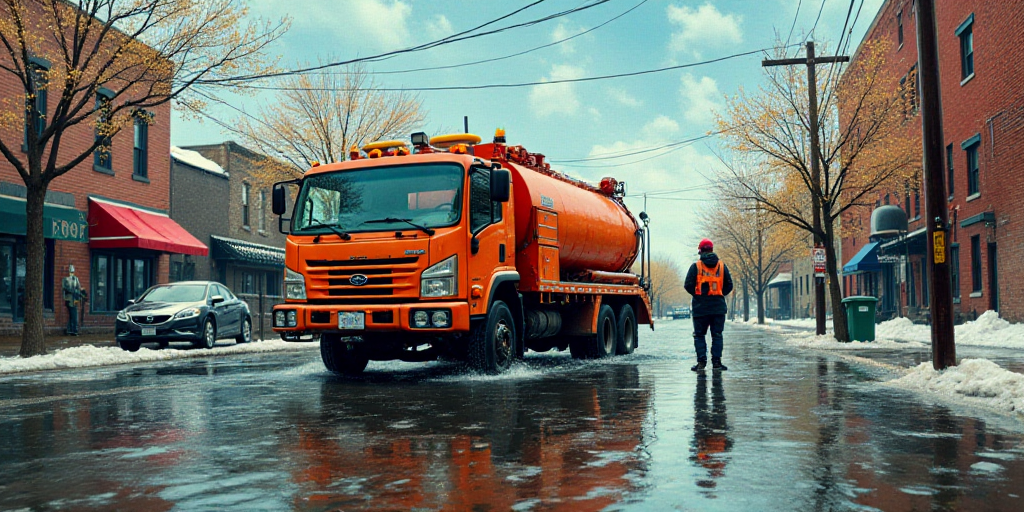Background on the Affected Areas and Recent Flooding
Heavy rains on September 27th in the eastern part of Mexico City and the State of Mexico caused significant issues for local authorities.
In Mexico City, the most affected aldermanies were Iztapalapa (Ejército de Oriente Zona Peñón, Vicente Guerrero, Santa María Aztahuacán, Desarrollo Urbano Quetzalcóatl, La Colmena) and Tláhuac (Barrio de San José, La Conchita, La Nopalera), where 3,521 homes were impacted by the historic precipitation.
In the State of Mexico, Nezahualcóyotl (Las Águilas, Metropolitana, Villada y Ampliación Vicente Villada) and La Paz (Los Reyes, Ampliación Los Reyes, Conjunto habitacional de Los Reyes y Tepozanes) were also heavily affected.
This region, including the stretch of the Línea A del Metro (Santa Martha-Los Reyes), is frequently hit by the rainy season despite ongoing drainage maintenance and dredging efforts.
President Sheinbaum’s Announcement and Project Details
In response to the recurring flooding issues, President Claudia Sheinbaum Pardo announced that the National Water Commission (CONAGUA) is planning a large-scale project to prevent future floods similar to the one on September 27th.
She mentioned that the strategy for necessary works will be presented in mid-October, with some key projects already identified.
One such project is the “La Concordia bridge,” connecting Iztapalapa, La Paz, and areas affected by the Línea A del Metro.
Sheinbaum explained that while flooding is common, this year’s intense rains exacerbated the situation. She stated that comprehensive works will be carried out, with some already planned and others still under study.
Another project location is the boundary between Nezahualcóyotl and Iztapalapa, specifically addressing the La Colmena area in Iztapalapa.
Explanation from CONAGUA’s Director
Efraín Morales López, CONAGUA’s Director General, explained that the flooding resulted from excessive rainfall combined with debris and a deteriorated collector on Avenida Vicente Villada.
He noted that streets feeding into this collector caused it to overflow, with only 2 out of 7 cubic meters of its capacity being effectively drained.
Morales López further explained that contrapendientes (water flow reversal) in the collector caused water to back up into neighborhoods instead of draining properly.
He mentioned that they are currently conducting a detailed study, called “perfiling,” of the collector and other relevant drainage systems in collaboration with the state governor and Mexico City’s head of government.
Actions in Iztapalapa
Clara Brugada, Head of Government in Iztapalapa, emphasized the collaborative efforts to design a comprehensive strategy for flood prevention.
She highlighted two crucial metropolitan areas requiring attention:
- “La Concordia to La Paz,” which receives significant water runoff from the surrounding hills and affects both the metro system and nearby residents in Los Reyes, La Paz.
- “La Colmena (Ermita-Zaragoza),” which borders Nezahualcóyotl and requires reinforcement with not just pipes but also regulatory measures like catch basins.
Key Questions and Answers
- What is the large-scale project for? The project aims to prevent future flooding in the eastern part of Mexico City and the State of Mexico.
- Which areas are prioritized for this project? Key areas include the La Concordia-La Paz bridge, Nezahualcóyotl’s boundary with Iztapalapa, and specific neighborhoods within both aldermanies.
- What causes the recurring flooding issues? The main factors are excessive rainfall, debris in drainage systems, and deteriorated collectors.
- What measures are being taken to address these issues? Comprehensive works, including the perfiling of drainage systems and installation of regulatory measures like catch basins, are being planned and implemented.






